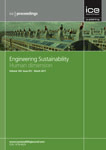
Proceedings of the Institution of Civil Engineers-Engineering Sustainability
Scope & Guideline
Bridging Engineering and Environmental Stewardship
Introduction
Aims and Scopes
- Sustainable Construction Practices:
Research on sustainable materials and methods aimed at reducing the environmental impact of construction, including lifecycle assessments, green building techniques, and the use of alternative materials. - Energy Efficiency in Engineering:
Exploration of energy-efficient designs and technologies in civil engineering, with a focus on reducing energy consumption in buildings and infrastructure through innovative solutions. - Climate Adaptation and Resilience:
Studies addressing the impact of climate change on civil engineering projects and the development of strategies to enhance resilience and adaptability in infrastructure. - Waste Management and Resource Efficiency:
Research focused on minimizing waste in construction processes, recycling materials, and promoting circular economy principles within the industry. - Integration of Digital Technologies:
Investigation into the application of digital tools, such as Building Information Modeling (BIM) and blockchain, to improve project management, efficiency, and sustainability in construction. - Social Value and Community Engagement:
Focus on the social implications of engineering projects, including stakeholder engagement, social value creation, and community-led initiatives.
Trending and Emerging
- Decarbonization Strategies:
An increasing number of studies focus on reducing carbon emissions in construction, such as low-carbon materials and energy-efficient design, reflecting the industry's urgent need to address climate change. - Digital Transformation in Construction:
The rise of digital technologies, including blockchain and advanced modeling techniques, is a significant trend, highlighting the importance of data-driven decision-making in improving sustainability. - Innovative Waste Utilization:
Research on the use of waste materials in construction, such as recycled glass or industrial by-products, is becoming more prevalent, showcasing a shift towards circular economy practices. - Performance-Based Sustainability Assessment:
Emerging methodologies for assessing sustainability that consider both environmental and social factors are gaining traction, indicating a holistic approach to evaluating construction projects. - Community-Centric Approaches:
A trend towards engaging local communities in sustainability initiatives is evident, reflecting an increased focus on social value and stakeholder involvement in engineering projects.
Declining or Waning
- Traditional Construction Materials:
Research on conventional materials such as standard concrete and asphalt has decreased as attention shifts toward sustainable alternatives and innovative composites. - General Environmental Regulations:
While environmental regulations remain important, specific studies focusing solely on compliance without addressing innovative solutions or practices are less frequently published. - Impact Studies Without Contextual Frameworks:
Research papers that analyze impacts without integrating them into broader sustainability frameworks or practical applications have seen a decline, as the journal emphasizes actionable insights.
Similar Journals

Green Chemical Engineering
Innovating chemical engineering for a sustainable future.Green Chemical Engineering, an esteemed journal published by KEAI PUBLISHING LTD, plays a pivotal role in advancing the field of sustainable chemical engineering. With an Open Access policy since 2020, this journal facilitates the free exchange of cutting-edge research and innovations that address critical environmental challenges. Based in China, it has rapidly gained recognition with impressive category quartiles, ranking Q1 in numerous relevant fields including Catalysis, Chemical Engineering (miscellaneous), Filtration and Separation, and Process Chemistry and Technology. Its presence in Scopus highlights its significance, with top rankings (e.g., Rank #4/19 in Filtration and Separation) placing it in the upper echelons of chemical engineering literature. Designed for researchers, professionals, and students alike, Green Chemical Engineering aims to foster a collaborative platform for the dissemination of pioneering work that contributes to a greener and more sustainable future.
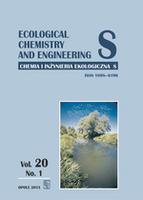
Ecological Chemistry and Engineering S-Chemia I Inzynieria Ekologiczna S
Transforming Knowledge into Ecological ActionEcological Chemistry and Engineering S, a prominent journal in the field of Environmental Chemistry and Engineering, provides a platform for innovative research and critical discussions surrounding ecological solutions and sustainable practices. Published by SCIENDO, this peer-reviewed journal is accessible to researchers and professionals dedicated to advancing our understanding of ecological systems and sustainable engineering practices. With an ISSN of 1898-6196 and an E-ISSN of 2084-4549, the journal has established itself in the academic community, reflected by its Q3 ranking in both Environmental Chemistry and Environmental Engineering categories as of 2023. Covering significant advancements from 2008 to 2024, it serves as an essential resource in advancing knowledge and fostering collaborations within interdisciplinary fields. Despite not offering open access, the journal remains an invaluable resource for researchers and students aiming to contribute to ecological sustainability strategies worldwide.
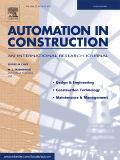
AUTOMATION IN CONSTRUCTION
Elevating Engineering Standards with Automation InsightsAUTOMATION IN CONSTRUCTION is a premier academic journal published by Elsevier, dedicated to advancing the fields of Building and Construction, Civil and Structural Engineering, and Control and Systems Engineering. Since its inception in 1992, this journal has served as a vital platform for disseminating innovative research and practical applications in automation technologies within the construction industry. With a distinguished 2023 impact factor reflected in its Q1 ranking across multiple engineering categories—securing rank #3 in Civil and Structural Engineering and rank #3 in Building and Construction—AUTOMATION IN CONSTRUCTION stands out as a leading resource for researchers, professionals, and students keen on staying at the forefront of this rapidly evolving field. The journal offers access to cutting-edge studies that explore automation processes, methodologies, and tools, contributing to the enhancement of productivity and sustainability in construction practices. With contributions from global experts, each issue of AUTOMATION IN CONSTRUCTION provides comprehensive insights that help drive innovation and foster collaboration.

Baltic Journal of Road and Bridge Engineering
Pioneering Research in Road and Bridge EngineeringThe Baltic Journal of Road and Bridge Engineering, published by RIGA TECHNICAL UNIV-RTU, serves as a pivotal platform for disseminating cutting-edge research in the fields of building and construction as well as civil and structural engineering. Established as an Open Access journal since 2006, it fosters global collaboration and accessibility to critical engineering knowledge, facilitating the exchange of innovative ideas among researchers, professionals, and students. With a commendable impact factor and recognition in Scopus rankings, where it stands in the third quartile for both relevant engineering categories, the journal underscores its significance in advancing the discipline. The journal aims to publish high-quality, peer-reviewed articles that address contemporary challenges in road and bridge engineering, making it an essential resource for anyone involved in infrastructure development and research. Located in Lithuania at 6B Kipsalas Street, RIGA LV-1658, this journal not only highlights the latest advancements but also seeks to inspire future innovations in engineering practices.

CANADIAN JOURNAL OF CIVIL ENGINEERING
Shaping Tomorrow's Infrastructure with Today’s DiscoveriesCanadian Journal of Civil Engineering, published by Canadian Science Publishing, serves as a premier platform for the dissemination of innovative research and development in the fields of civil and structural engineering, as well as environmental science. Established in 1971, this journal maintains a robust reputation, achieving a Q3 ranking in both civil engineering and general environmental science categories as of 2023. While it does not currently offer open access, the journal is accessible to a wide audience of researchers, professionals, and students who are keen to stay abreast of the latest advancements in civil engineering practices. With a significant number of yearly publications and a committed editorial board, the Canadian Journal of Civil Engineering contributes to the foundational knowledge and practical applications in the engineering community, thereby playing a critical role in addressing contemporary challenges in civil infrastructure and environmental sustainability.
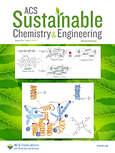
ACS Sustainable Chemistry & Engineering
Driving innovation for a sustainable world.ACS Sustainable Chemistry & Engineering is a premier journal published by the American Chemical Society, dedicated to advancing knowledge and innovation in the fields of sustainable chemistry and engineering. With an impressive impact factor and a consistent ranking in the Q1 category across various disciplines such as Chemical Engineering, Chemistry, Environmental Chemistry, and Renewable Energy, this journal serves as a vital resource for researchers, professionals, and students alike. Since its inception in 2013, the journal has been committed to publishing high-quality, peer-reviewed articles that address the critical challenges of sustainability in chemistry and engineering. With no open-access option currently available, the journal emphasizes the importance of premium scholarly communication. As the field continues to evolve, ACS Sustainable Chemistry & Engineering remains at the forefront of providing cutting-edge research that impacts our understanding and application of sustainable practices in the chemical sciences.
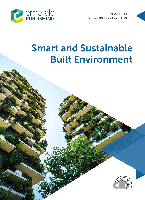
Smart and Sustainable Built Environment
Exploring the intersection of sustainability and architecture.Smart and Sustainable Built Environment, published by Emerald Group Publishing Ltd, is a prestigious journal dedicated to advancing the knowledge and practice of sustainable development within the landscape of modern architecture, building, and civil engineering. With an impact factor that reflects its strong influence and standing—illustrated by its consistent categorization in the Q1 tier across several relevant fields including Architecture, Building and Construction, and Urban Studies—this journal has become an essential resource for researchers, practitioners, and policymakers alike. Operating in the vibrant academic backdrop of the United Kingdom, it aims to publish cutting-edge research that addresses critical issues at the intersection of sustainability and built environments. The journal is also indexed in Scopus with impressive rankings, ensuring visibility and credibility. The scope of the journal encompasses a broad array of topics, encouraging contributions that discuss innovative practices, policies, and technologies to foster smart and sustainable development. With its dedication to publishing high-quality research from 2012 to 2024, Smart and Sustainable Built Environment is at the forefront of fostering dialogue and collaboration in the pursuit of sustainable solutions for our built environment.

Built Environment Project and Asset Management
Advancing the Future of Built Environment ManagementBuilt Environment Project and Asset Management is an esteemed academic journal published by Emerald Group Publishing Ltd, dedicated to advancing knowledge and research within the fields of architecture, building and construction, civil and structural engineering, and urban studies. With an impressive impact factor reflected in its Q1 and Q2 rankings across various categories, the journal serves as a critical platform for scholars, practitioners, and students seeking to explore the intersections of project management and asset optimization in the built environment. Covering a breadth of topics from sustainable construction practices to innovative management strategies, Built Environment Project and Asset Management promotes high-quality studies and practical applications that contribute significantly to the discipline. With a commitment to the dissemination of impactful research, this journal is a vital resource for those aiming to influence policy and practice in the evolving landscape of the built environment.
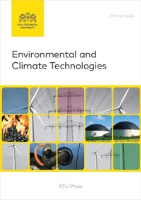
Environmental and Climate Technologies
Innovating Research for Climate Resilience.Environmental and Climate Technologies is a premier open-access journal dedicated to advancing knowledge in the fields of environmental science and renewable energy. Published by SCIENDO since 2009, this journal plays a crucial role in disseminating innovative research and interdisciplinary studies that address the pressing challenges posed by climate change and sustainable development. With its current positioning in the Q2 quartile for Environmental Science (miscellaneous) and Q3 for Renewable Energy, Sustainability and the Environment, it is recognized for its significant contributions to the academic community, ranking #107 out of 233 in General Environmental Science and #161 out of 270 in Renewable Energy. Hailing from Germany and operating under an open-access policy, Environmental and Climate Technologies ensures that research remains accessible to a global audience, fostering collaboration and discussion among researchers, professionals, and students alike. The journal invites rigorous scientific inquiries and practical solutions that can mitigate the impact of climate-related issues, making it a vital resource for those committed to environmental stewardship and sustainability.

Results in Engineering
Pioneering Solutions for Tomorrow's Engineering ChallengesResults in Engineering is an esteemed open-access journal published by Elsevier, dedicated to advancing the field of engineering through high-quality, innovative research. Since its inception in 2019, this journal has rapidly established itself within the academic community, evidenced by its prestigious Q1 ranking in the Engineering (miscellaneous) category for 2023 and a remarkable ranking of #54 out of 307 in General Engineering according to the Scopus database, placing it in the 82nd percentile of its category. Located in the Netherlands, Results in Engineering provides a global platform for researchers, professionals, and students to disseminate their findings and foster collaboration across diverse engineering disciplines. The journal's commitment to open access ensures that valuable research is accessible to a wider audience, fostering innovation and knowledge sharing. With a progressive approach to publication, Results in Engineering seeks to enhance the engineering landscape by publishing cutting-edge studies that address contemporary challenges and solutions in the field.